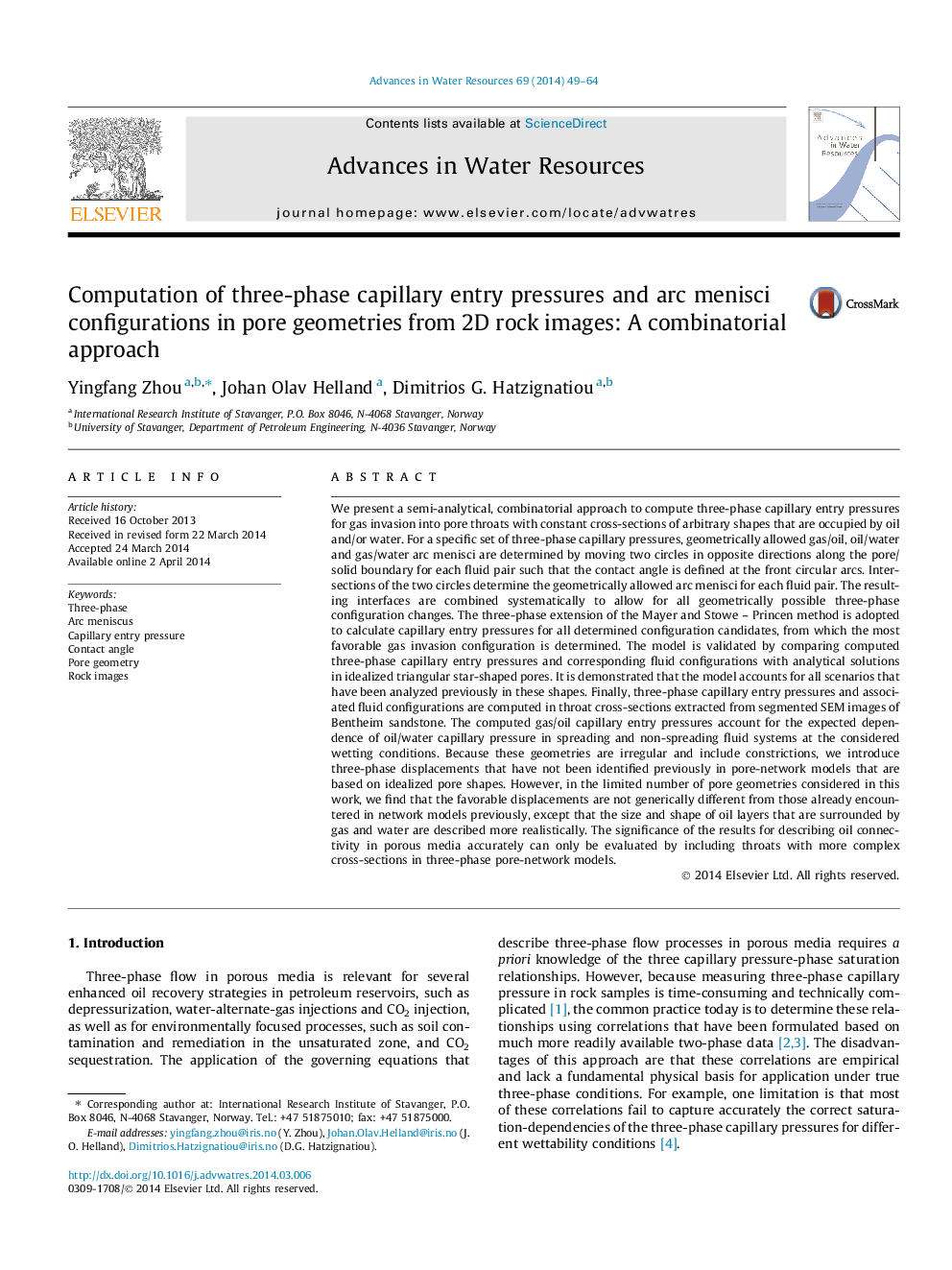| کد مقاله | کد نشریه | سال انتشار | مقاله انگلیسی | نسخه تمام متن |
|---|---|---|---|---|
| 4525529 | 1625640 | 2014 | 16 صفحه PDF | دانلود رایگان |

• New method for three-phase capillary entry pressure in realistic pore shapes.
• Validation of the method against analytical solutions in idealized geometry.
• Gas entry calculations for spreading and non-spreading oils in sandstone pores.
• Visual agreement with experimental three-phase configurations in sandstone.
We present a semi-analytical, combinatorial approach to compute three-phase capillary entry pressures for gas invasion into pore throats with constant cross-sections of arbitrary shapes that are occupied by oil and/or water. For a specific set of three-phase capillary pressures, geometrically allowed gas/oil, oil/water and gas/water arc menisci are determined by moving two circles in opposite directions along the pore/solid boundary for each fluid pair such that the contact angle is defined at the front circular arcs. Intersections of the two circles determine the geometrically allowed arc menisci for each fluid pair. The resulting interfaces are combined systematically to allow for all geometrically possible three-phase configuration changes. The three-phase extension of the Mayer and Stowe – Princen method is adopted to calculate capillary entry pressures for all determined configuration candidates, from which the most favorable gas invasion configuration is determined. The model is validated by comparing computed three-phase capillary entry pressures and corresponding fluid configurations with analytical solutions in idealized triangular star-shaped pores. It is demonstrated that the model accounts for all scenarios that have been analyzed previously in these shapes. Finally, three-phase capillary entry pressures and associated fluid configurations are computed in throat cross-sections extracted from segmented SEM images of Bentheim sandstone. The computed gas/oil capillary entry pressures account for the expected dependence of oil/water capillary pressure in spreading and non-spreading fluid systems at the considered wetting conditions. Because these geometries are irregular and include constrictions, we introduce three-phase displacements that have not been identified previously in pore-network models that are based on idealized pore shapes. However, in the limited number of pore geometries considered in this work, we find that the favorable displacements are not generically different from those already encountered in network models previously, except that the size and shape of oil layers that are surrounded by gas and water are described more realistically. The significance of the results for describing oil connectivity in porous media accurately can only be evaluated by including throats with more complex cross-sections in three-phase pore-network models.
Figure optionsDownload as PowerPoint slide
Journal: Advances in Water Resources - Volume 69, July 2014, Pages 49–64